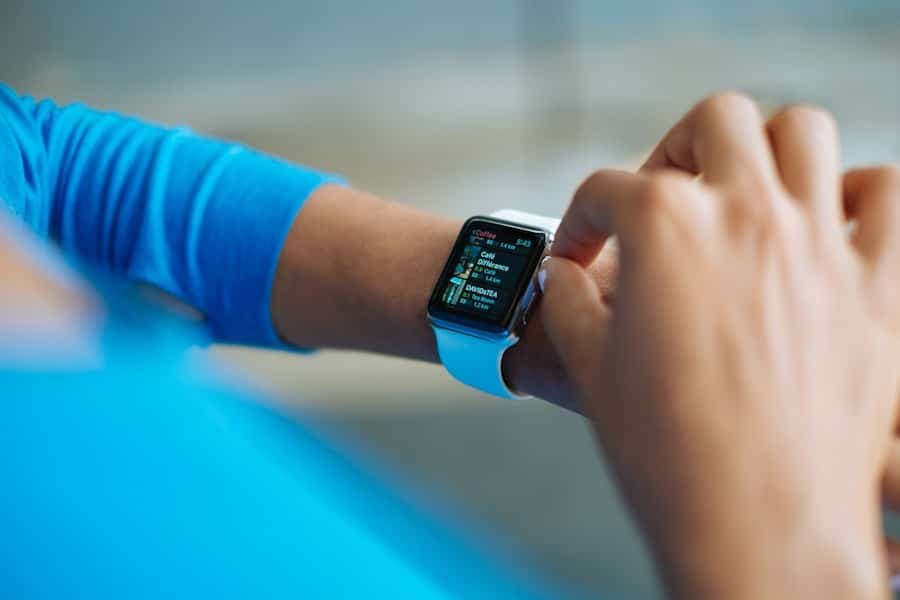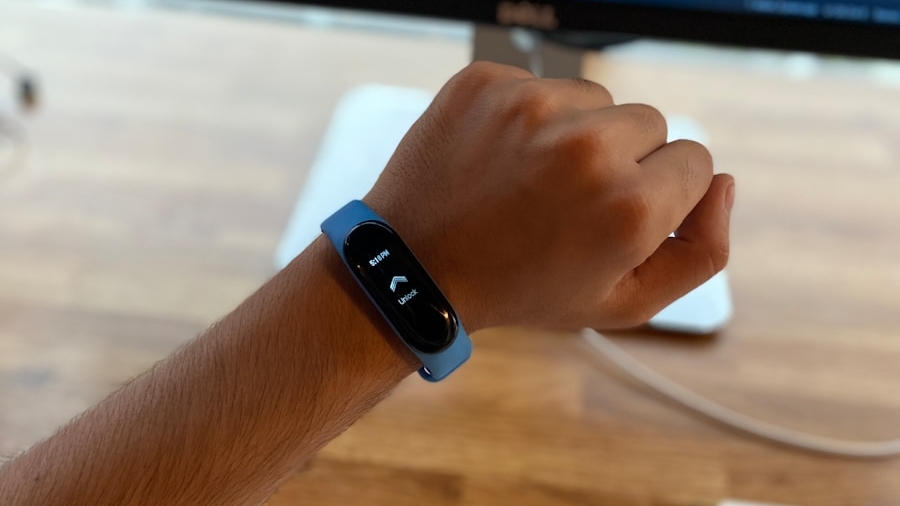The advent of artificial intelligence (AI) has revolutionized numerous sectors, and the realm of wearable devices is no exception. Wearable technology, which encompasses smartwatches, fitness trackers, and health monitors, has evolved significantly over the past decade. Initially designed for basic functionalities such as timekeeping and step counting, these devices have now integrated sophisticated AI algorithms that enhance their capabilities.
This integration allows for real-time data analysis, personalized user experiences, and predictive insights that were previously unimaginable. As a result, wearables are not just passive tools; they have become proactive companions in health management and lifestyle optimization. The synergy between AI and wearable devices is particularly evident in the way these technologies collect and process vast amounts of data.
Sensors embedded in wearables gather information on various metrics, including heart rate, sleep patterns, physical activity, and even stress levels. AI algorithms analyze this data to identify trends, make predictions, and provide actionable insights. This transformation from simple data collection to intelligent analysis marks a significant leap forward in how individuals can monitor their health and fitness.
As we delve deeper into the role of predictive capabilities in next-gen wearable devices, it becomes clear that AI is not merely an enhancement; it is a fundamental component that shapes the future of personal health technology.
Key Takeaways
- AI is revolutionizing wearable devices by enhancing their predictive capabilities and personalization.
- Predictive capabilities in next-gen wearable devices can provide valuable insights into health and fitness tracking.
- AI-powered predictive capabilities significantly impact user experience by providing personalized recommendations and insights.
- The integration of AI and predictive capabilities in smartwatches and fitness trackers is shaping the future of wearable technology.
- Ethical considerations and potential challenges of AI in next-gen wearable devices need to be carefully addressed for responsible and effective implementation.
The Role of Predictive Capabilities in Next-Gen Wearable Devices
Predictive capabilities are at the forefront of the evolution of wearable devices, enabling them to anticipate user needs and behaviors based on historical data. By leveraging machine learning algorithms, these devices can analyze patterns over time to forecast future health events or lifestyle changes. For instance, a smartwatch equipped with predictive analytics might recognize that a user’s heart rate tends to spike during certain activities or times of day.
By identifying these patterns, the device can alert the user to potential stressors or suggest modifications to their routine to mitigate adverse effects. Moreover, predictive capabilities extend beyond mere alerts; they can also facilitate proactive health management. For example, wearables can predict potential health issues by analyzing biometric data trends.
If a user’s sleep quality has been declining over several weeks, the device might recommend lifestyle changes or even suggest a consultation with a healthcare professional. This proactive approach empowers users to take charge of their health before issues escalate, fostering a more engaged and informed user base. The ability to predict outcomes based on data not only enhances the functionality of wearable devices but also significantly improves user trust and reliance on these technologies.
How AI Enhances Health and Fitness Tracking in Wearable Devices

AI significantly enhances health and fitness tracking capabilities in wearable devices by providing deeper insights into user behavior and physiological responses. Traditional fitness trackers typically offer basic metrics such as steps taken or calories burned; however, AI-driven wearables go beyond these rudimentary statistics. They analyze complex datasets to provide a comprehensive view of an individual’s health status.
For instance, advanced algorithms can assess how different activities impact heart rate variability or recovery times, allowing users to optimize their workouts for better performance. Additionally, AI can personalize fitness recommendations based on individual goals and preferences. A user aiming to improve cardiovascular fitness might receive tailored workout plans that adapt over time based on their progress and feedback.
This level of customization is made possible through continuous learning algorithms that adjust recommendations as more data is collected. For example, if a user consistently struggles with a particular exercise, the device might suggest alternative activities that align better with their fitness level and preferences. This personalized approach not only enhances user engagement but also increases the likelihood of achieving fitness goals.
The Impact of AI-Powered Predictive Capabilities on User Experience
The integration of AI-powered predictive capabilities profoundly impacts the user experience by creating a more intuitive and responsive interaction with wearable devices. Users are no longer passive recipients of data; instead, they engage with devices that understand their habits and preferences. For instance, a smartwatch that learns a user’s daily routine can provide timely reminders for hydration or suggest breaks during prolonged periods of inactivity.
This level of personalization fosters a sense of companionship between the user and their device, enhancing overall satisfaction. Furthermore, the predictive nature of AI allows for a more seamless integration into daily life. Users can receive alerts about potential health issues before they manifest physically, enabling them to take preventive measures.
For example, if a wearable detects irregular heart rhythms over time, it can prompt the user to seek medical advice proactively. This shift from reactive to proactive health management not only improves individual well-being but also cultivates a culture of preventive care among users. The result is a more engaged user base that feels empowered by their technology rather than overwhelmed by it.
AI’s Role in Personalized Recommendations and Insights in Wearable Devices
Personalization is one of the most significant advantages offered by AI in wearable devices. By analyzing individual data points—such as activity levels, sleep patterns, and even dietary habits—AI algorithms can generate tailored recommendations that resonate with each user’s unique lifestyle. For instance, if a user consistently logs insufficient sleep hours, the device might suggest specific bedtime routines or relaxation techniques designed to improve sleep quality.
This level of customization ensures that users receive relevant advice that aligns with their personal goals.
For example, if a fitness tracker identifies that a user’s physical activity tends to drop during certain months or seasons, it can recommend strategies to maintain motivation during those periods.
This could include setting new challenges or connecting with friends for group activities.
The Integration of AI and Predictive Capabilities in Smartwatches and Fitness Trackers

Personalized Insights and Recommendations
As a result, these devices can provide increasingly accurate predictions about health trends and offer personalized recommendations based on individual behavior. For instance, when a smartwatch detects an increase in physical activity levels over time, it may adjust its fitness goals accordingly or suggest new challenges to keep the user engaged. Similarly, if it notices irregularities in sleep patterns, it can recommend adjustments to bedtime routines or suggest mindfulness exercises to improve sleep quality.
Intelligent Feedback Loops
This dynamic interaction between the device and the user creates an ecosystem where wearables not only track but also actively contribute to improving health outcomes through intelligent feedback loops. By providing users with actionable insights and recommendations, these devices empower individuals to take a more proactive approach to their health and wellness.
A New Era of Health Monitoring
The integration of AI and predictive capabilities into wearables represents a significant step forward in the evolution of health monitoring. As these devices continue to advance, we can expect to see even more sophisticated features and capabilities that enable users to take greater control of their health and wellness.
The Future of AI-Powered Wearable Devices and Predictive Capabilities
Looking ahead, the future of AI-powered wearable devices is poised for remarkable advancements driven by ongoing innovations in technology and data analytics. As machine learning algorithms become more sophisticated, we can expect wearables to offer even more precise predictions about health outcomes based on an expanding array of biometric data points. Future devices may incorporate additional sensors capable of monitoring variables such as blood glucose levels or hydration status in real-time, further enhancing their predictive capabilities.
Moreover, as interoperability between devices increases—allowing wearables to communicate seamlessly with smartphones and other smart home technologies—the potential for comprehensive health management expands exponentially. Imagine a scenario where your smartwatch not only tracks your physical activity but also syncs with your smart home system to adjust lighting or temperature based on your sleep patterns or stress levels detected throughout the day. Such integrations could create an environment tailored specifically to enhance well-being and productivity.
Ethical Considerations and Potential Challenges of AI in Next-Gen Wearable Devices
While the benefits of AI in wearable devices are substantial, ethical considerations must be addressed as these technologies continue to evolve. One significant concern revolves around data privacy and security. Wearable devices collect sensitive personal information that could be vulnerable to breaches or misuse if not adequately protected.
Users must be assured that their data is handled responsibly and transparently by manufacturers who prioritize privacy. Additionally, there is the challenge of ensuring equitable access to these advanced technologies. As AI-powered wearables become more prevalent in health management, disparities may arise between those who can afford such devices and those who cannot.
This digital divide could exacerbate existing health inequalities if only certain populations benefit from predictive capabilities while others are left behind. Addressing these ethical challenges will be crucial as we move forward into an era where AI plays an increasingly central role in personal health management through wearable technology.
In a recent article from TechRepublic, IT decision-makers can learn about the latest technologies that are shaping the future of wearable devices with predictive capabilities. This article provides valuable insights into how AI is revolutionizing the way we interact with wearable technology. To further explore the intersection of technology and predictive capabilities, check out this article from TechRepublic.
FAQs
What are next-gen wearable devices?
Next-gen wearable devices are advanced wearable technology that can be worn on the body to track and monitor various aspects of the user’s health and fitness. These devices often have predictive capabilities and are powered by artificial intelligence (AI) to provide personalized insights and recommendations.
How is AI powering next-gen wearable devices?
AI is powering next-gen wearable devices by analyzing the data collected from sensors and providing personalized insights and recommendations to the user. AI algorithms can process large amounts of data to predict trends, detect patterns, and provide proactive health and fitness guidance.
What are the predictive capabilities of next-gen wearable devices?
Next-gen wearable devices with predictive capabilities can anticipate the user’s health and fitness needs based on their historical data and real-time inputs. These devices can predict potential health issues, recommend personalized fitness routines, and provide proactive alerts for potential health risks.
What are the benefits of AI-powered next-gen wearable devices?
The benefits of AI-powered next-gen wearable devices include personalized health and fitness insights, proactive health monitoring, real-time feedback, and the ability to track and manage various health metrics. These devices can also help users make informed decisions about their lifestyle and well-being.
How are AI-powered next-gen wearable devices impacting the healthcare industry?
AI-powered next-gen wearable devices are impacting the healthcare industry by enabling remote patient monitoring, early detection of health issues, and personalized treatment plans. These devices can also help healthcare providers gather real-time data for research and improve patient outcomes.

